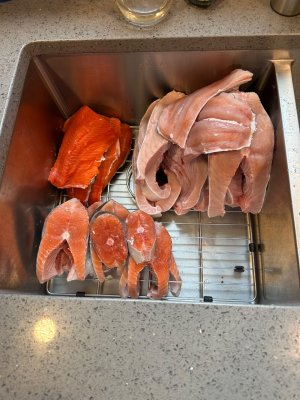CBsqrd
Well-Known Member
Post #
See post #28 above.
Also from the Vancouver Reports recently:
Has anyone hear of a Tule salmon? They are a white version but apparently a poor quality of flesh.
The white I had a few days ago was delicious, buttery soft, no smell. I have caught some white chinook up here that were not the same.
See post #28 above.
Also from the Vancouver Reports recently:
The Columbia River has similar stock with reds spawning in the upper river system and whites in the lower; they refer to them as Up River Brights (URBs) and Tules, respectively. Very similar morphology and there is lots of info online on how to tell the two apart.


